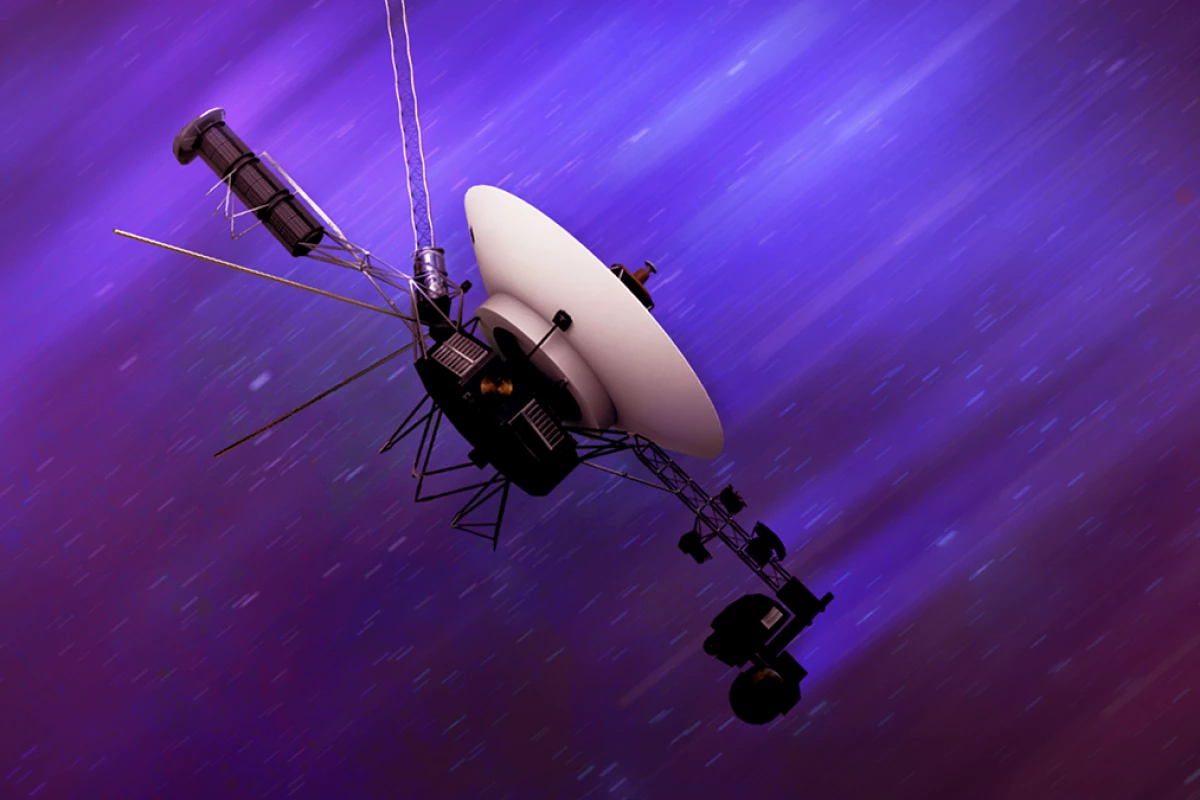It was race against time as NASA engineers recently raced to fix a thruster problem aboard the vintage Voyager 1 deep space probe. It's hard enough to repair a craft at the edge of the solar system, but this time they faced a potentially deadly deadline.
Launched almost half a century ago, Voyager 1 and its sister probe Voyager 2 have a special place in the heart of NASA, which is determined to keep the robotic pair functioning so long as there's a trickle of current coming from the onboard nuclear generators. It's a bit like keeping a vintage car on the road, except this car is 15.46 billion miles (24.87 billion km) away, a radio message takes 23 hours and two minutes to reach it, there are no spare parts, and no one around to even adjust a screw.
Despite this, NASA has been blessed by the Voyager spacecraft being insanely over-engineered. The people who built and launched it might all be dead or retired, the manuals literally turning yellow with age, and the code that runs on its computers the digital equivalent of Sanskrit, but both probes are still operating, albeit at a much lower level. Over the years, the engineers have had to contend with a radio unit switching itself off, data feeds suddenly spouting gibberish, and continuing thruster problems, but they still keep ticking along.
The thrusters have been a particular problem because they are among the very few systems with moving parts left running on Voyager 1, and something moving means something can go wrong. Essentially, there are four thruster systems on the spacecraft. One of these controls the attitude of the spacecraft so it points in the right direction, the second controls its roll, and three and four are backup systems.
Over the 48 years since Voyager 1 was launched, these thrusters have begun to show their age and NASA has had to deal with clogging fuel lines and persnickety valves by all manner of work arounds, including switching from the primary to the back up systems and then back again.
In the latest instance, the primary roll thrusters have built up so much residue in their fuel lines that it's feared that the whole system could seize up in a few months. To avoid this, the engineers spent March of this year coaxing the secondary thrusters back to life. These had already been declared unserviceable in 2004, but the team found that by reactivating some internal heaters they could get the back-up thrusters going again, so Voyager 1 can keep its radio antenna pointed at the Earth by locking onto a guide star.
This isn't the first time such a cosmic correction has been made, but there was a particular sense of urgency about this one because NASA was facing a target that, if missed, could have meant the end of the mission.
Voyager 1 is kept in contact with Earth through NASA's Deep Space Network (DSN), which consists of three antennas at the Goldstone Deep Space Communications Complex near Barstow, California; the Madrid Deep Space Communications Complex near Robledo de Chavela, Spain; and the Canberra Deep Space Communication Complex near Canberra, Australia. Unfortunately, only Canberra can track Voyager's part of the sky, and its main 230-ft (70-m) DSS-43 antenna was scheduled to undergo a major refit beginning in May 2025 and continuing until February 2026. During this time, Voyager would be incommunicado with only brief contact in August and December.
This meant that NASA had to repair Voyager 1 and ensure that it could autonomously carry out routine attitude adjustments using a new schedule of firing times and durations to put as little stress as possible on the systems – not to mention turning on the dormant back-up thrusters after 21 years without them blowing up.
According to the space agency, Voyager 1 responded to commands on March 20. This was two days after the orders were sent, so there was quite a bit of pencil chewing, nail biting, and coffee swilling in the meantime. In the end, telemetry reports confirmed that the temperature of the thruster heaters rose as predicted and Voyager 1 can carry on with its mission of exploration as it hurtles into interstellar space, never to return.
"It was such a glorious moment. Team morale was very high that day," said Todd Barber, the mission’s propulsion lead at JPL. "These thrusters were considered dead. And that was a legitimate conclusion. It’s just that one of our engineers had this insight that maybe there was this other possible cause and it was fixable. It was yet another miracle save for Voyager."
Source: NASA





